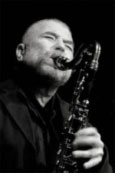Classical contemporary or Jazz
Classical music is a broad term that usually refers to music produced in, or rooted in the traditions of Western ecclesiastical and concert music, encompassing a broad period from roughly the 9th century to present times. The term "classical music" did not appear until the early 19th century, in an attempt to "canonize" the period from Johann Sebastian Bach to Beethoven as a golden age.
 There are characteristics that classical music contains that generally few or no other genres of music contain.
There are few if any genres in which so many different instruments are used simultaneously by performing groups such as symphony orchestras, which often contain as many as 5 or so different types of string instruments, 7 or more types of woodwind instruments, 4 or so types of brass instrument, and many diverse percussion instruments, sometimes as many as 10 different types. Also prevalent, especially in opera, is the human voice. Comparatively, most popular music genres involve fewer instruments.
There are characteristics that classical music contains that generally few or no other genres of music contain.
There are few if any genres in which so many different instruments are used simultaneously by performing groups such as symphony orchestras, which often contain as many as 5 or so different types of string instruments, 7 or more types of woodwind instruments, 4 or so types of brass instrument, and many diverse percussion instruments, sometimes as many as 10 different types. Also prevalent, especially in opera, is the human voice. Comparatively, most popular music genres involve fewer instruments.
The instruments used in common practice classical music were mostly invented before the mid-19th century (often much earlier), and codified in the 18th and 19th centuries. They consist of the instruments found in an orchestra, together with a few other solo instruments (such as the piano, harpsichord, and organ). Electric instruments such as the electric guitar appear occasionally in the classical music of the 20th and 21st centuries.
Whereas the majority of popular styles lend themselves to the song form, such as rock music, classical music can take on the form the song, concerto, symphony, opera, dance music, suite, chamber music, etude, symphonic poem, electronic music, or more.
Along with a certain desire for composers to attain high technical achievement in writing their music, performers of classical music are faced with similar goals of technical mastery, as demonstrated by the proportionately high amount of schooling and private study most successful classical musicians have had.
Classical works often display musical complexity through the composer's use of development, modulation (changing of keys), variation rather than exact repetition, musical phrases that are not of even length, counterpoint, polyphony and sophisticated harmony.
Classical music is considered primarily a written musical tradition, preserved in music notation, as opposed to being transmitted orally, by rote, or in recordings of particular performances. Its written transmission, along with the veneration bestowed on certain classical works, has led to the expectation that performers will play a work in a way that realizes in detail the original intentions of the composer. Classical music performers often achieve very high reputations for their musicianship, even if they do not compose themselves. Generally however, it is the composers who are remembered more than the performers.
Throughout history, parents from middle- and especially upper-class households have often made sure that their children receive classical music training from a young age; for social reasons or in an effort to instill a useful sense of self-discipline. Some consider that a degree of knowledge of important works of classical music is part of a good general education.
In the broadest and popular sense, contemporary music is any music being written in the present day. However in the strict historical and musicological terminology, the term contemporary music exclusively refers to the modern forms of art music, this includes:
- The post-1945 modern forms of post-tonal music (including serial music, Concrete music, experimental music, etc.)
In a more restricted sense it may only include the most recent forms of this music:
- Contemporary classical music (post-1975) (including post-modern music, Spectral music, minimalist music, etc.)
In a much less restricted sense the term contemporary is sometimes used to refer to certain generational trends in music. With the rapid growth of indie labels, the music industry has grown exponentially over the last 5 years introducing genres never before heard of. Thus contemporary music can easily be defined by current market trends.
 Jazz is an original American musical art form which originated around the beginning of the 20th century in African American communities in the Southern U.S. out of a confluence of African and European music traditions. The use of blue notes, call-and-response, improvisation, polyrhythm, syncopation and the swung note of ragtime are characteristics traceable back to jazz's West African pedigree.
Jazz is an original American musical art form which originated around the beginning of the 20th century in African American communities in the Southern U.S. out of a confluence of African and European music traditions. The use of blue notes, call-and-response, improvisation, polyrhythm, syncopation and the swung note of ragtime are characteristics traceable back to jazz's West African pedigree.
Jazz has, from its early 20th century inception, spawned a variety of subgenres, from New Orleans Dixieland dating from the early 1910s, big band-style swing from the 1930s and 1940s, bebop from the mid-1940s, a variety of Latin-jazz fusions such as Afro-Cuban and Brazilian jazz from the 1950s and 1960s, jazz-rock fusion from the 1970s and later developments such as acid jazz.
In jazz, the skilled performer will interpret a tune in very individual ways, never playing the same composition exactly the same way twice. Depending upon the performer's mood and personal experience, interactions with fellow musicians, or even members of the audience, a jazz musician/performer may alter melodies, harmonies or time signature at will.
